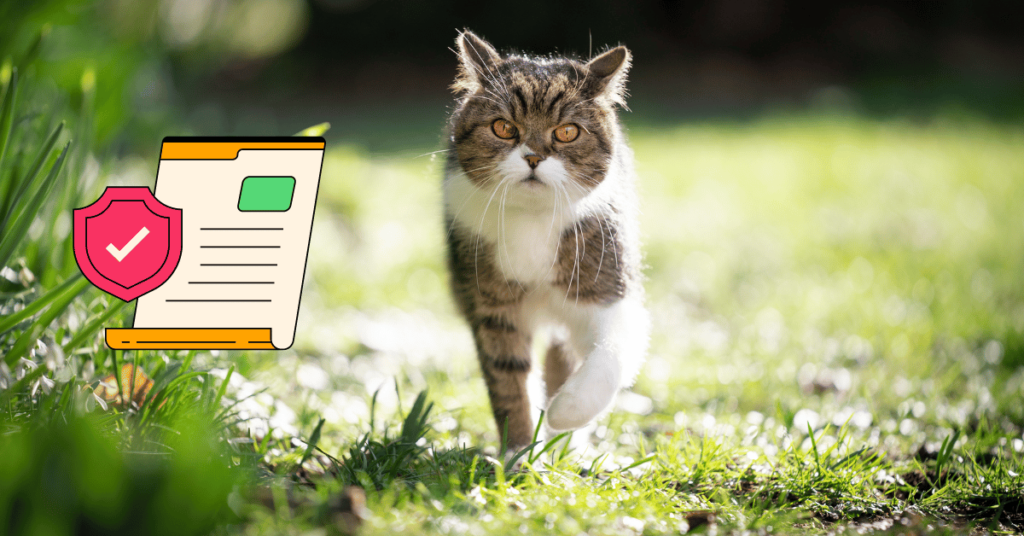Vet bills can be expensive, and signing your cat up for health insurance can also put a strain on your budget. However, with the right approach, a good insurance plan could save you thousands of dollars over your cat’s lifetime, offering peace of mind and helping to manage your family finances.
While cheaper doesn’t always mean better, there are smart ways to reduce your insurance costs without compromising your cat’s care. In this article, we’ll walk you through five simple and effective tips to help you get cheaper cat insurance rates while still ensuring your pet is well-protected.
1. Compare Different Pet Insurance Plans
Insurance premiums depend on several factors, including your cat’s age, breed, health risks, and even where you live. For instance, veterinary services in urban areas tend to be more expensive than in rural regions, and this cost is reflected in insurance premiums.
To get the best deal, make sure to compare different insurance plans. You can use online comparison tools or websites dedicated to helping pet owners evaluate policies side by side. When comparing, look at the details, including coverage options, exclusions, and waiting periods. Some plans have longer waiting periods for specific conditions, like orthopedic issues, so make sure you’re aware of these details before signing up.
Once you’ve found a plan through a comparison tool, check the insurer’s own website to see if they offer any exclusive deals or discounts.
Tips for Comparing Plans:
- Look at accident-only vs. comprehensive coverage.
- Check customer reviews for real-life experiences.
- Consider policy waiting periods for specific conditions.
2. Identify the Right Level of Coverage
Another way to save on cat insurance is to choose the right level of coverage for your pet’s needs. Insurance plans typically offer various coverage tiers, and you can sometimes reduce your premium by selecting a lower tier or skipping unnecessary extras.
The most common insurance plans cover accidents and illnesses, which include treatments for injuries, surgeries, hospital stays, diagnostic tests, and chronic conditions. Some policies also offer additional coverage, such as behavioral therapy, alternative treatments, and wellness care for routine visits. While comprehensive plans cover more, they are also more expensive.
If your cat is generally healthy, it may be worth considering a basic accident-only policy. However, since cats can develop chronic conditions as they age, it’s wise to consult your vet to determine what level of coverage will best suit your cat’s needs in the future.
Tips for Choosing Coverage:
- Avoid paying for extras you don’t need.
- Consider accident-only coverage for young, healthy cats.
- Consult your vet for advice on potential future health risks.
3. Take Advantage of Pet Insurance Discounts
Many pet insurance providers offer discounts that can significantly lower your premium. For example, if you have multiple pets, you can often qualify for a multi-pet discount, which can save you anywhere from 5% to 10% on your monthly premium.
Additionally, some insurers offer discounts for specific groups, such as military personnel. If you or a family member has served in the Armed Forces, you could be eligible for discounts up to 15%.
Another way to save is by paying your annual premium upfront, as many insurers offer a discount for doing so. If your employer offers pet insurance as part of their benefits package, be sure to explore whether you can save by enrolling through work.
Tips for Finding Discounts:
- Look for multi-pet discounts if you have more than one animal.
- Check if you’re eligible for military or veteran discounts.
- Consider paying annually for a reduced rate.
4. Consider Your Cat’s Breed
Certain cat breeds are more prone to specific health issues, which can impact your insurance costs. For example, Siamese cats are susceptible to certain cancers, while Ragdolls are known to suffer from kidney disease. Purebred or pedigree cats, in particular, tend to have higher insurance premiums because they are more prone to genetic conditions.
By understanding the common health issues associated with your cat’s breed, you can choose a plan that covers these risks without paying for unnecessary coverage. Keep in mind that mixed-breed cats tend to have fewer hereditary health problems, which can result in lower premiums.
Tips for Breed-Specific Coverage:
- Research common health issues for your cat’s breed.
- Choose a plan that covers potential future illnesses.
- Consider mixed-breed cats for lower insurance costs.
5. Keep Your Cat Healthy
Keeping your cat in good health is not only good for their well-being but can also help reduce your insurance costs. A healthy cat is less likely to need frequent vet visits or treatments, which reduces the likelihood of filing claims. Insurance companies often offer lower premiums to pet owners who make fewer claims.
Some simple ways to keep your cat healthy include ensuring they are up-to-date on vaccinations, providing regular flea and tick prevention, maintaining a balanced diet, and encouraging regular exercise. Additionally, getting your cat microchipped can improve safety and prevent the costs associated with losing a pet.
Insuring your cat when they are still young and healthy can also help you avoid exclusions for pre-existing conditions, as most pet insurance plans do not cover conditions that arise before coverage begins.
Tips for Maintaining Your Cat’s Health:
- Keep up with vaccinations and flea control.
- Feed a balanced diet and encourage regular exercise.
- Sign up for insurance early to avoid pre-existing condition exclusions.
Conclusion
While the cost of pet insurance may seem high at first, there are several effective ways to reduce your cat’s insurance premiums without sacrificing the quality of care. By comparing different plans, choosing the right level of coverage, taking advantage of discounts, and keeping your cat healthy, you can ensure that your feline friend is protected at a price that fits your budget.
Follow these tips to get affordable cat insurance, and enjoy the peace of mind that comes with knowing you’re prepared for any unexpected veterinary costs.
So that was all about this article. If you have any further questions feel free to comment down below. We are always here to help you!




